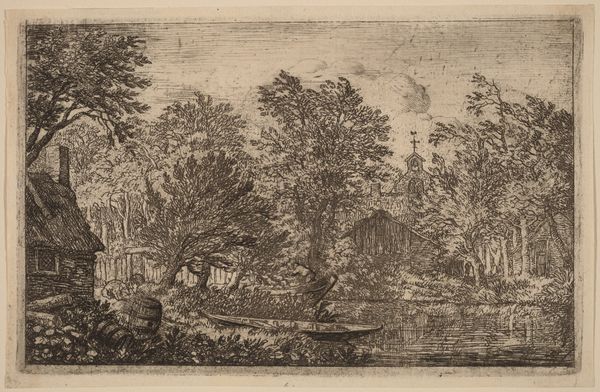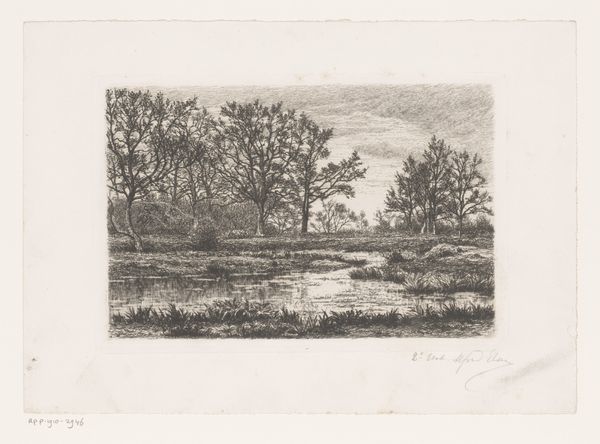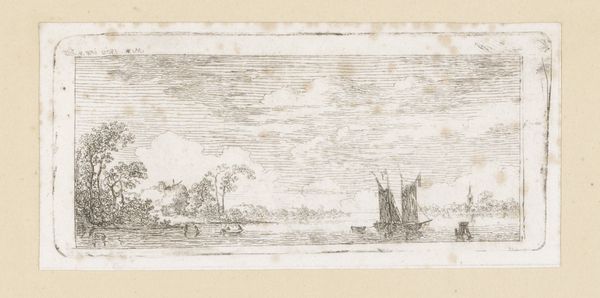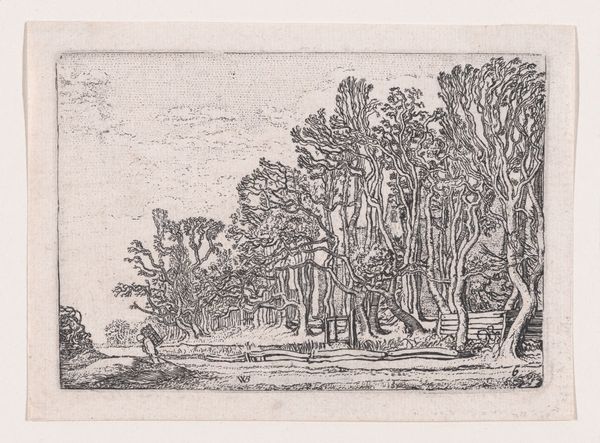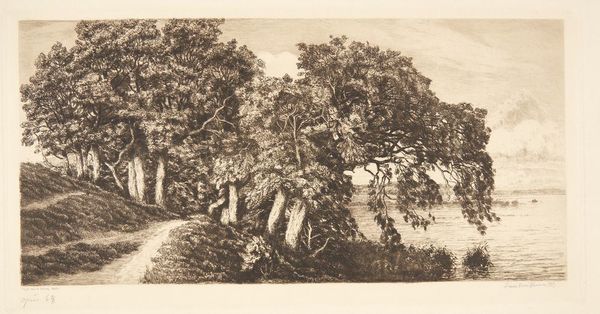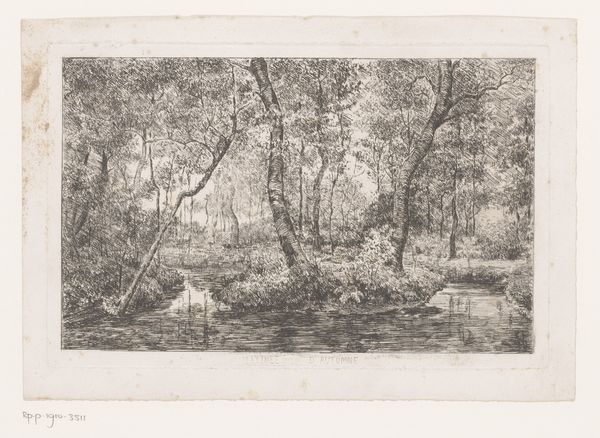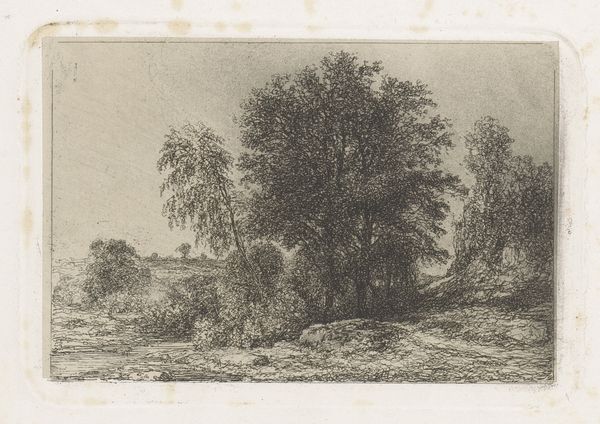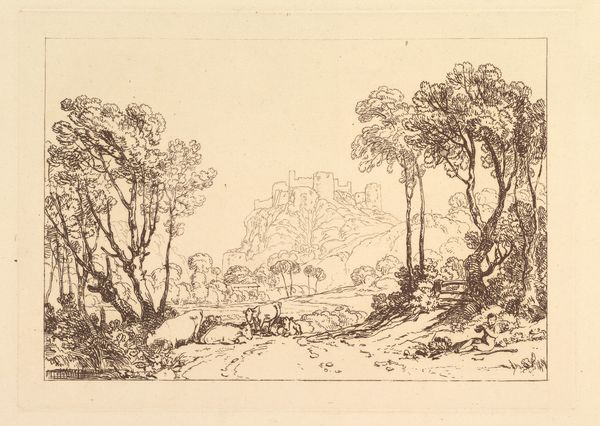
La Lac au Milieu de la Forêt (The Lake in the Middle of the Forest) 1849
0:00
0:00
drawing, print, etching
#
drawing
# print
#
etching
#
landscape
#
form
#
romanticism
#
line
#
monochrome
Dimensions: Sheet: 5 3/8 × 6 7/16 in. (13.6 × 16.3 cm) Plate: 1 11/16 × 3 1/16 in. (4.3 × 7.8 cm)
Copyright: Public Domain
Curator: Bresdin's "La Lac au Milieu de la Forêt," etched in 1849, pulls you immediately into a dense, almost suffocating world. It’s so intensely detailed for its size; the texture vibrates on the surface. What strikes you first? Editor: The sheer volume of lines. It feels almost obsessive, doesn't it? The detail seems to deliberately obscure rather than clarify, which adds a fascinating layer of tension. Curator: That density isn't just aesthetic. Bresdin worked largely outside the established art market, scraping by on commissions and odd jobs. Printmaking, particularly etching, offered a way to reproduce and circulate his images widely. The intense labor becomes part of the work’s meaning, speaking to artistic production under capitalism. Editor: True, but the Romantic style draws me to focus on its form: notice how the line work guides your eye, drawing you from the flurry of birds and reflected light on the water and subtly hinting toward receding depth despite the compression of space. The tonal range, though monochrome, achieves incredible depth. Curator: And the forest itself? For someone deeply entrenched in radical politics, like Bresdin, "nature" wasn’t some idyllic escape. It's a space of work, struggle, and, perhaps, resistance. We know that he made political prints as well, where he expressed ideas of egalitarianism and revolution. Do you think this artwork had any political meaning? Editor: Perhaps in its rejection of conventional landscape aesthetics? Yet the work's primary impact lies in its aesthetic execution, how it creates a complete world through pure graphic means. Look at the miniscule strokes suggesting water reflection. It doesn't scream overt political message. The effect is ultimately poetic. Curator: Perhaps. Knowing about Bresdin’s lived experience provides some crucial context; how an artist lives undeniably informs how, and sometimes, why, they create. Understanding how artwork reaches a public audience completes it, though. Editor: Still, without that formal articulation—the precise dance of line and tone—all the biographical detail would amount to nothing in terms of how effectively we perceive it as art. Curator: Fair enough, seeing this landscape, it makes me consider the socio-economic realities faced by printmakers of Bresdin's era. Editor: And the mastery behind the etched line remains undeniably compelling, regardless of its origins.
Comments
No comments
Be the first to comment and join the conversation on the ultimate creative platform.


